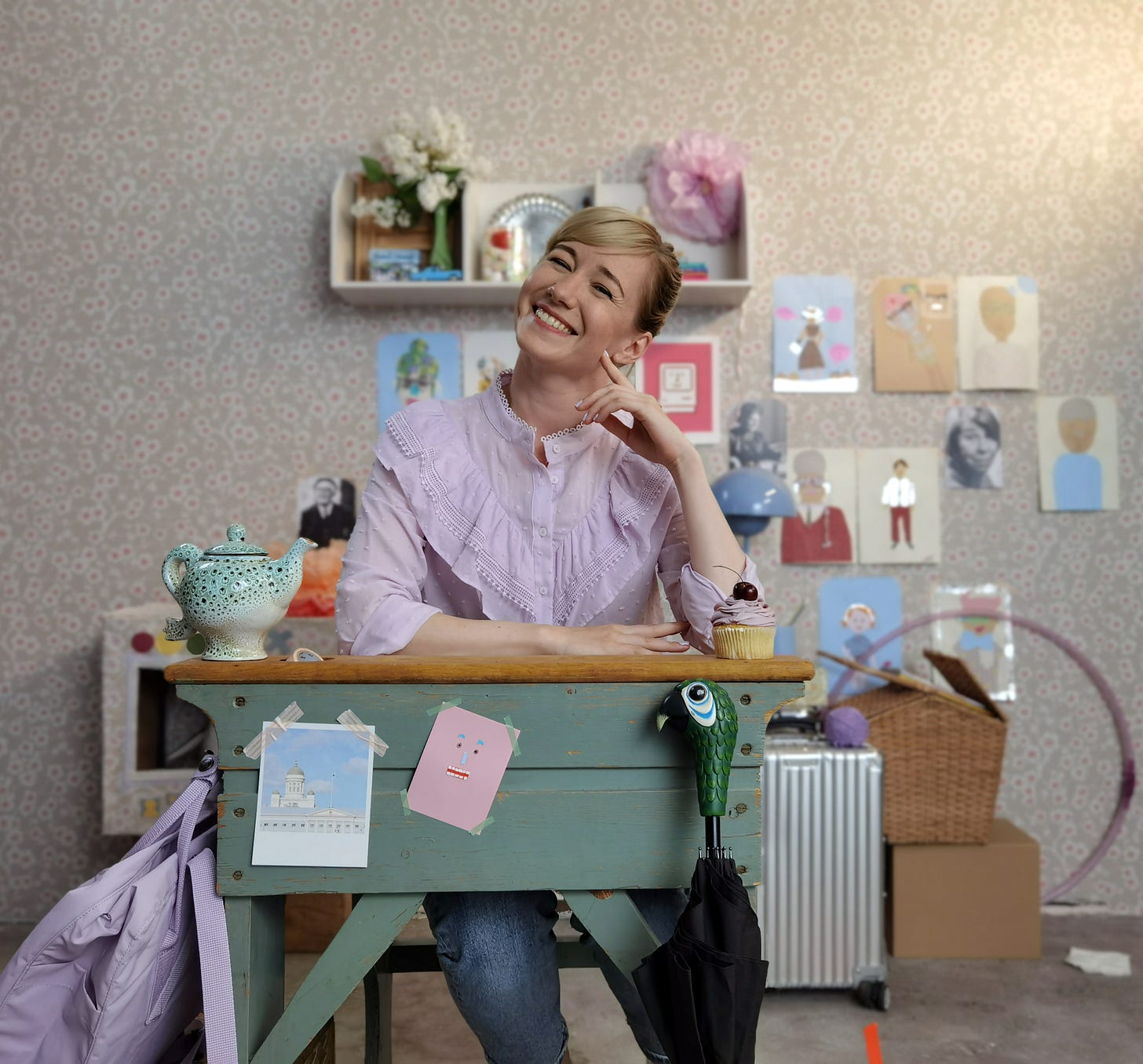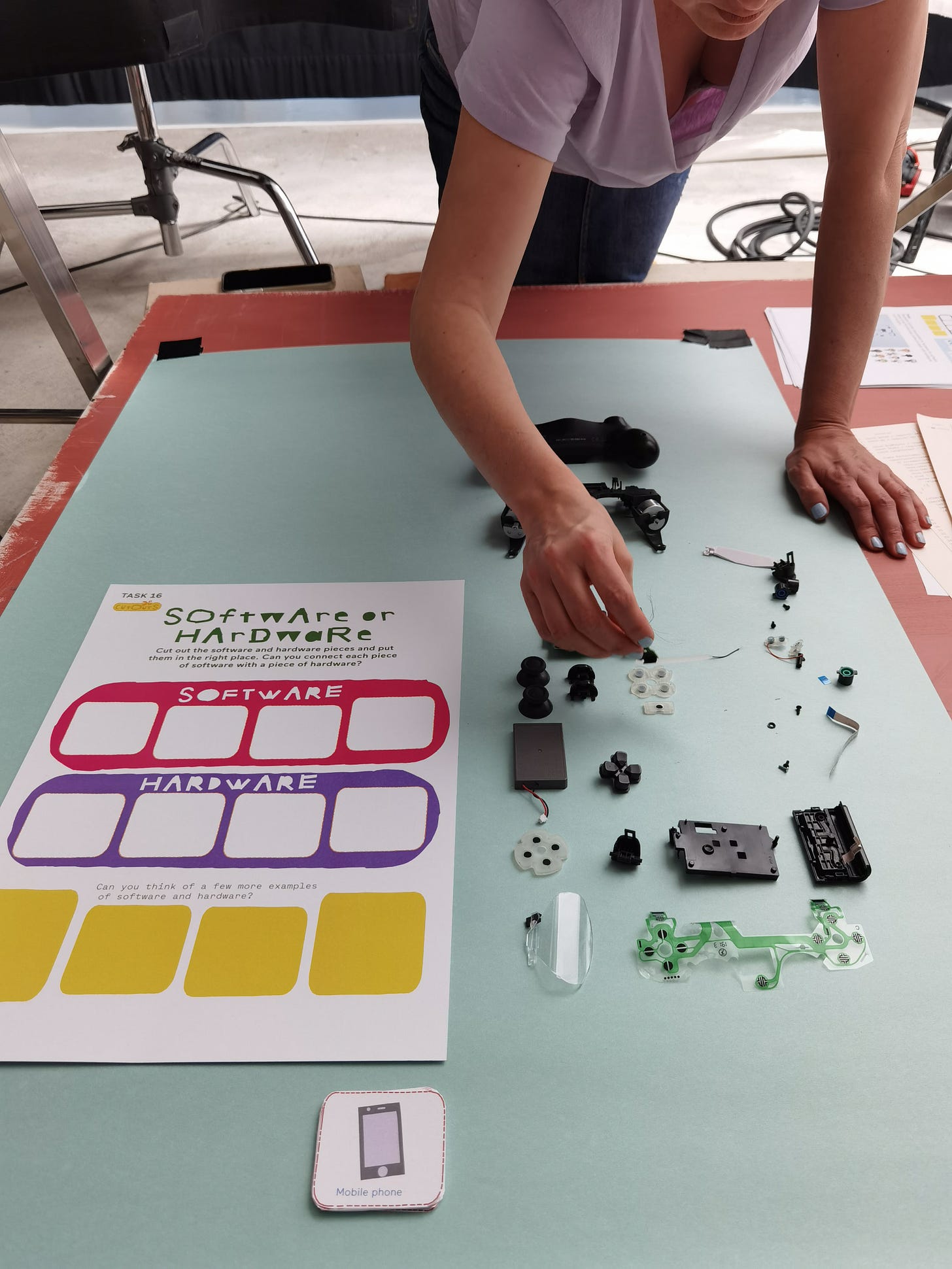No. 03 — Computer Science in 60 Seconds 🕰️ Producing a video series: a how-to 🎬 Speaking to Children
An Online Series for Lockdown Learning
My name is Linda. I write a bi-weekly newsletter about computer science, childhood and culture - and there are 9808 of you listening. If you enjoy this issue, please share it with anyone you think may find it useful.

Push a button and reach thousands of people, they say. I’ve spent the last two days tweaking YouTube links, writing short snippets of text and copy-pasting URLs. The last four hours were spent hunting straight and curly quotation marks. But now, an advance peak into the big project I’ve been working all year: Computer Science in 60 seconds.

Last year’s big production was Love Letters for Computers, a video series intended for teachers to help prepare them for teaching computer science in elementary school.
When Covid-19 hit, it was clear that also children need remote teaching friendly content with an increased focus on technology, and a deep commitment to making computer science approachable for everyone. And that’s how Computer Science in 60 Seconds was born, a series of 30 videos, free of charge, introducing computer science (in one minute or so). The self-paced videos are followed by an activity the kids can complete at home.
Love Letters was my first time showrunning and writing and for most of the time I was terrified. This time I trusted the process a bit more:
Audience: children between 5-9, lockdown learning, teachers and parents
Call-to-action: a real world activity the children can do after watching the video (“Now you do it”). The idea of semantic waves helped me a lot in structuring each episodes.
Style: Mobile-first, vertical video (inspired by Chinese drama!), under 60 seconds each. Shot in a quirky, colorful style of Herve Tullet or Wes Anderson meets Sesame Street.
Each episode looked at brainstorming stage like this - it really helped to have both the script and the visual ideas side by side.

This is what it looks like when shooting:

And here’s the end result, one of the 30 episodes with the accompanying activities:
A huge thank you goes for the production team - something like this never happens without a stellar team. There are also more news coming for the Spanish (and Finnish!) speaking world.
Brought to you by Fundacio La Caixa
Showrunner Linda Liukas
Executive Producer Emma Alftan
Director of Photography Severi Laine
Art Direction, Production Design, Costumes Anna-Kaisa Melvas
Production assistant Dounia Ait Brahim
Editor Severi Laine
Gaffer Jori Asikainen
Production sound Saku Anttila
Runner Robert Mathur
Makeup and Hair Artist Eeva-Leena Liedes
Scriptwork Rachel Graham
Songs Lullatone
Special Thanks Marta Garcia, Eva Melvas and her art students, Studio Valo, Aya Iwaya

Now, go watch the rest of the series!
Linked List
In computer science, a linked list is a linear collection of data elements whose order is not given by their physical placement in memory. But here it is a selection of things I’ve been reading lately.
BBC’s Vanessa Amberleigh has some wonderful words on writing for children and Mister Roger’s Set of Rules for Talking to Kids is a legend for a reason.
No Film School has been a great resource for someone with no background or lingo in the world of film. I especially enjoyed these articles on cinematography and lighting.
National Center for Computing Education has been writing these Pedagogy QuickReads that have really inspired me to rethink a lot of my own (online) teaching.
The classroom
I’m hoping to surface and share stories from all of you and I’d love to see your creations! Or hit reply and answer me:
Who would direct your dream computer science series and what would it look like?
How does the idea of a semantic wave resonate with your work?
“Indeed, because of the constant competition presented by entertainment programs on television, educational material must be just as lively, fast-moving and dramatically presented as standard TV fare, if it hopes to win a sizeable audience. It is an irony of television that, for all its potential to educate, it also provides endless distractions from pursuits of the mind. I believe that any high quality educational program for children must accommodate itself to that fact, although it means breaking new ground and risking the criticism of educational purist." - Joan Ganz Cooney in 1966, in the research report that would lead to Sesame Street. How does her thinking align with the YouTube/TikTok era?

